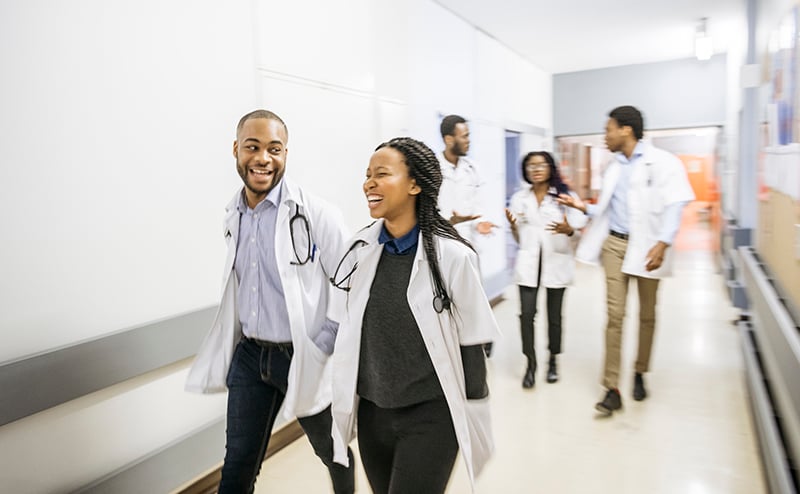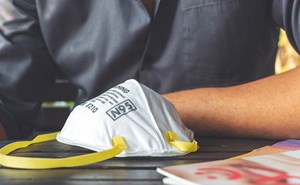The American College of Emergency Physicians (ACEP), Emergency Medicine Residents’ Association (EMRA) and Council of Residency Directors in Emergency Medicine (CORD) recognize the impact on undergraduate medical education as institutions respond to the coronavirus outbreak.
As institutions make decisions regarding the health and safety of their medical students and residents within the context of individual policies, local, state and federal regulations, as well as national public health guidelines, we encourage academic centers and schools to consider how to best balance their students’ educational needs with their safety and the safety of patients.
We understand that COVID-19 will have a significant impact on medical education programs moving forward. Residency directors should be prepared to adjust and understand the need to be flexible during this time. It is in our nature as emergency medicine physicians to be adaptive and flexible, especially in times of uncertainty. We encourage you to work with your medical students and engage them in creating solutions.
We recommend the following:
STUDENT SUPPORT
- Recognize the emotional and psychological impact of the current pandemic on students and trainees. Offer support and provide access to counseling services when possible. Identify students who may be struggling psychologically and intervene early. Consider matching students to resident and/or faculty mentors and developing and distributing informational updates written at the medical student level.
- Consider additional accommodations for students with underlying health conditions that put them at high risk or with extenuating circumstances, to allow participation in learning experiences that contribute to their educational development.
NOVEL ALTERNATIVES
- Explore novel programs to expose medical students to virtual clinical experiences such as virtual away rotations, virtual scribe experiences and/or other online clinical workshops to continue clinical development.
- Encourage medical students, if relieved of clinical duties due to COVID-19, to serve the needs of their communities. This may include support for other health care providers, such as emergency medicine physicians, who may need things like babysitters or essential shopping due to higher clinical demands.
CLINICAL ROTATIONS
- When determining how best to hold introductions to clinical rotations, first evaluate educational resources, clinical volume, and safety capacity in your setting.
- For clinical rotations, students in clinical years who have received appropriate training can be involved in care of patients with communicable diseases; however, given the lack of data on transmissibility of COVID-19, it is important to monitor community spread, and consider limiting patient contact in order to preserve scarce personal protective equipment (PPE). o Consider virtual Objective Structured Clinical Exams (OSCE)
- Replace in person end of rotation board exams with electronic testing.
- Virtual electronic or oral assessments are preferable to in person examination(s).
- Communicate frequently with students and their clinical supervisors about institutional policy changes, emphasizing expectations, safety precautions, and the importance of their role within the health care team and system.
- Emphasize the importance of appropriate use of PPE. Distribute high quality online instructional videos and resources to educate students in donning and doffing practices and the distinction between different levels of patient isolation (contact, airborne, droplet, etc.).
- Review existing organizational policy statements or position statements delineating the roles or responsibilities of medical students, to assure they remain appropriate for safe patient care and institutional needs.
EM-BOUND STUDENT ADVISING
- Provide frequent support and advising to senior medical students as they select Emergency Medicine as a specialty, including advice tailored to the unique environment of the application and interview process through the Fall of 2020.
- Clerkship directors and medical schools should preferentially consider students without home EM programs for away rotations in EM at their institutions.
- Promote collaboration within the specialty of emergency medicine to define reasonable expectations among medical schools and residency programs regarding timing and presence of USMLEs, SLOEs, and Emergency Medicine home and away rotations in the ERAS application.
- Develop rosters of asynchronous or online learning opportunities for EM-bound students to continue their personal professional development during a time when traditional clinical experiences may be suspended or substantially modified.
- Refer to CORD’s Consensus Statement Regarding SLOEs and Away Rotations.
- Refer to EMRA’s Clerkship Match for up-to-date information on program away rotation policies.
- Clerkships should update EMRA Match to communicate how their programs plan to address COVID and away rotations.
- Update the Additional Information Students Should Know section to make it easy for students to know the latest information about how your clerkship plans to operate during these uncertain times.
- Update your Spot Availability Indicator to let students know which months you are currently accepting rotators. Keeping this up to date can help reduce the number of emails you receive from students asking for updates about each month’s availability.
- A CDEM sub-group is currently working on a google sheet with clerkship info that will be updated frequently as well. Please complete the survey to add your program to the list. Look for emails from the group to update your information as it changes. The goal of this is to have a repository for clerkship directors to advise students on what programs are available for away rotations.
Advisors and programs will recognize that expectations in the 2020-2021 application season will likely be dramatically different than in previous years. There will be evolving expectations and strategies to help students and programs optimize decisions as residency applications for emergency medicine change this cycle.





